It’s a question that’s been around almost as long as the show itself: is Doctor Who horror? And what does that even mean?

The dark nights are drawing in, the allotment pumpkins have turned from green to orange, and the shops are full of plastic skulls, spiders and fangs. Meanwhile, social media feeds are full of friends and family in the middle of marathons of classic scary films. Yes, it’s almost Halloween again. So what better time to consider one of the eternal questions: is Doctor Who horror?
Some will be quick to point out that Doctor Who is, above all else, science fiction. Or at least, as others would say, science fantasy. That’s undoubtedly true. But then, any story can fit into more than one genre. Mary Shelly’s Frankenstein is generally considered to be the first science fiction novel. But with the themes of monsters, murder and fear, it’s also clearly a horror novel. But can we say the same of Doctor Who?
More than anything else, the defining characteristic of horror is that it’s scary. Many horror stories have a supernatural element, but then you can have stories of ghosts and goblins that are gentle, charming or romantic, without being remotely scary. By the same token, you can have thoughtful, philosophical, horror-free science fiction tales about robots and aliens. Those elements only become horror when they’re designed to get under the audience’s skin, unnerving or terrifying them.
Can a family show ever be true horror?
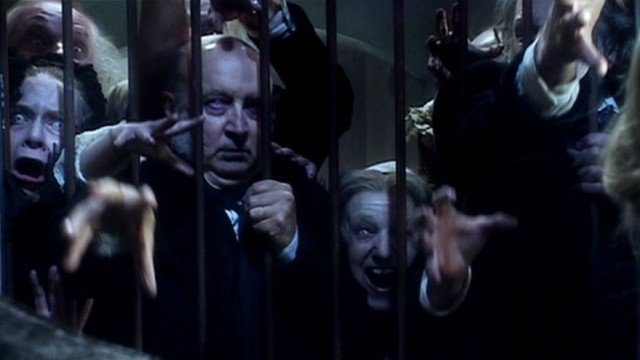
One of Doctor Who’s most celebrated writers, Robert Holmes, once summed up his approach to crafting Doctor Who stories as: “Right, let’s scare the little buggers to death,” while talk of watching the show from “behind the sofa” has been a cliché since the early 1970s. But how scary is scary when it comes to calling Doctor Who horror? Both quotes emphasise that Doctor Who is show that should be scary for children. However, can you really consider something horror if it only scares the kids?
There are two answers to that. First, while children’s horror might be as scary as other subgenres, if the intent is to scare the target audience then it’s as valid a branch of horror as any other.
Second, there’s not much doubt that there have been plenty of times Doctor Who hasn’t just been scary for younger viewers. In fact, complaints that Doctor Who horror was too scary for tots have followed the show since the Doctor’s earliest adventures.
In recent years, ‘The Unquiet Dead’ (homicidal zombies in a Victorian morgue), ‘Dark Water’ (the dead can feel their own cremations), and ‘Deep Breath’ (flesh-stealing cyborgs in a balloon made of of human skin) are among the episodes to have made headlines after complaints to the BBC for being too scary. Back in 2005, the BBC even briefly issued guidance that Doctor Who was too scary for children before walking it back when Russell T Davies reminded them being scary was part of the job.
The folk horror tradition has been a long-standing element of creepy Doctor Who
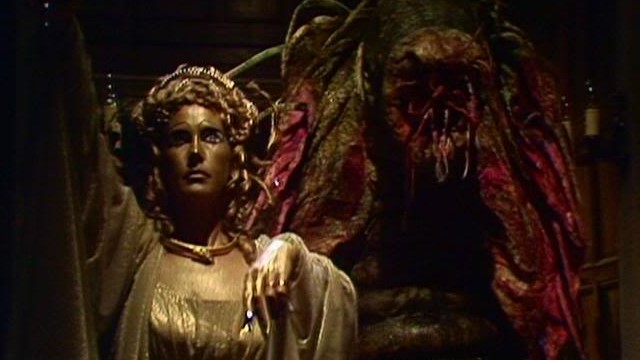
The world of Doctor Who horror hasn’t always been subtle about its roots, either. Several of the best Doctor Who horror stories have been heavily inspired by, or even loosely adapted from, existing horror stories or genres.
Good old fashioned folk horror is one subgenre that Doctor Who has used multiple times. ‘The Dæmons’ wraps its Quatermass-style story of ancient alien intervention in the trappings of traditional folk horror. There’s an isolated village whose name Devil’s End speaks into the old, local memories of something nasty being buried beneath it. There’s a sinister vicar leading the community down the path of human sacrifice and devil worship, and the gargoyle Bok is like an illustration from an old ghost story. The Doctor may hand-wave the supernatural elements away with talk of ‘psionic energy,’ but it’s Doctor Who horror at its finest.
The first half of ‘The Stones of Blood,’ too, is full of folk horror stylings, with druidic cults, blood-drinking stone circles and a lady of the manor who’s secretly immortal.
But ‘Image of the Fendahl’ is the peak of this strand of Doctor Who horror. While there’s technically a plot point about the Fendahl being from a long lost ‘fifth planet,’ the story and creature itself are so strange and otherworldly, and so rich in eldritch destinies and family lines that have been twisted over millennia, that it’s effectively folk horror with Doctor Who inserted, rather than the other way around.
From the 1980s onwards, the influence of folk horror on Doctor Who waned substantially. But it still gave us the likes of ‘The Awakening,’ in which the local church turns out to be a huge capstone stopping a buried demon from escaping its prison – one whose baleful influence persuades the local community to engage in human sacrifice to restore the town’s fortunes.
And ‘The Curse of Fenric’ taps into the same vein as ‘Fendahl,’ featuring an ancient evil who has manipulated entire communities and families for centuries in order to gain its own freedom… and the world’s destruction.
And more recently, ‘The Witchfinders’ deals with similar themes of a village built atop antediluvian evils, and local gentry on a quest to purge the community of the impure, and the walking dead. It may be a little bit less explicit in its horrors (nobody shoots themselves in the head to avoid being turned into a Lovecraftian slug monster this time) but all the core elements are there, this time right down to the 17th century setting, and the corrupt witchfinders who are as big a threat as the devils they seek.
What classic stories inspired Doctor Who horror?
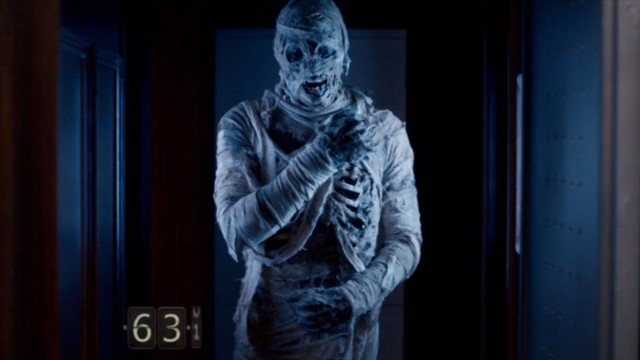
Classic horror literature and films have also been sinister but fertile ground for the world of Doctor Who horror to build on. Sometimes it may have wandered so far off the path to be almost unrecognisable (you have to squint really hard to see the Jekyll and Hyde origins of ‘Planet of Evil’) but oftentimes it’s part of the fun to see just how blatantly Doctor Who steals from the best.
‘The Brain of Morbius,’ meanwhile, couldn’t be much more explicit in its homage of Frankenstein, both of the novel and the classic Universal adaptations. There’s a castle, an obsessed scientist, a monstrous body stitched together from salvaged parts, the brain of a genius which winds up damaged, creating a rampaging monster instead of the ‘perfect’ human being… There’s even a downtrodden, hunchbacked servant, and a crowd of locals with flaming torches ready to drive the monster off a cliff.
Then there is ‘Pyramids of Mars,’ which is populated by tropes from both the Universal and Hammer movies. There’s a mysterious Egyptian who has travelled to the west on a quest to avenge the god he serves, there are mummies who lumber around on their assigned missions to murder and destroy, and there are demonstrations of the invulnerability of the mummies with shotguns in English manor houses.
The only things missing are the tana leaves and a spot of reincarnation, although the later story ‘Mummy on the Orient Express’ not only features a more traditional look for its mummy, but echoes the tana leaves part of the mythos with the scroll that both keeps it alive and summons it to kill.
Vampires and zombies have also had their place among the monsters of Doctor Who. Often, however, they appear via some sort of substitute; Doctor Who is full of vampire-like creatures that feed on psychic energy, time or the like. While from ‘The Empty Child’ to ‘Silence in the Library’ and ‘Oxygen,’ Doctor Who horror often features the slowly-shuffling dead or possessed, operating on the principle that if they touch you, you become one of them. Even the Cybermen themselves could be said to be the ultimate zombie (the dead hunting the living to make them the same) although they’re a bit chattier than the average undead.
But a handful of stories like ‘State of Decay,’ ‘The Curse of Fenric,’ ‘Smith and Jones’ and ‘The Vampires of Venice’ have featured the real, blood-sucking deal, complete with hypnotism, crypts and stakes through the heart, and the use of pure faith as a defence. Although it’s true that you’re not likely to find many old school vampires drinking straight from the neck with plastic straws like in ‘Smith in Jones.’
In recent decades, Doctor Who has been on a mission to make everything in the world terrifying
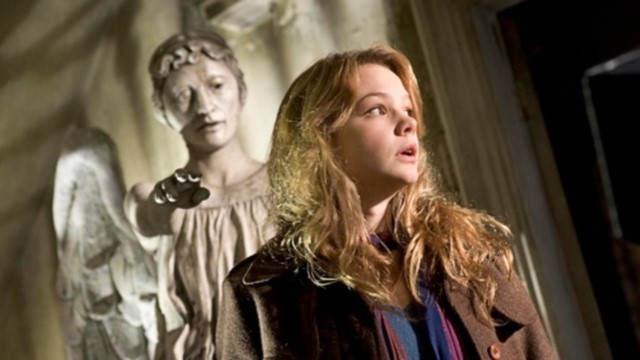
But Doctor Who horror episodes have also changed with the times, and it’s not just classic novels and films that have inspired the show’s scariest episodes. ‘Sleep No More’ plugged straight into the ‘found footage’ trend that became popular after The Blair Witch Project, with every shot supposedly composed from footage collected by the nanocameras themselves. Although, in typical Doctor Who fashion, it was more than just an aesthetic choice, and ultimately both a clue to the mystery and a final sting in the tail.
Similarly, the Silence consciously add some uniquely American terrors to the arsenal of Doctor Who horror, tapping into the various conspiracy theories in which strange men in black suits, skinny grey aliens and time lapses are all recurring elements. Meanwhile, their scarecrow-like silhouettes and almost omnipresent nature bring creatures like the famous Slenderman to mind.
And whilst Tom Baker wasn’t shy about decrying Alien as boring, it and other horror movies of the 1970s have become as much a part of later Doctor Who horrors as the classics, with episodes like ‘Last Christmas’ even referencing Alien directly. And if the early episodes of ‘The Seeds of Doom’ homaged the original film version of The Thing from Another World, the body horror and paranoia of the later John Carpenter adaptation The Thing has been a touchstone of several Who stories since.
Not that Doctor Who hasn’t been able to come up with its own, completely original scares. All along, but particularly in the 21st century, Doctor Who horror seems to have spun a roulette wheel of everyday objects and actions and then made whatever came up totally terrifying: shop window dummies, shadows, ticking clocks, the repeating game, those moments when you walk into a room and can’t remember why, that crusty stuff in the corner of your eyes when you wake up, blinking, even breathing…
The list goes on. There’s nothing that Doctor Who can’t turn into pure nightmare fuel, if it sets its mind to it.
No matter the Doctor or showrunner, Doctor Who horror is here to stay
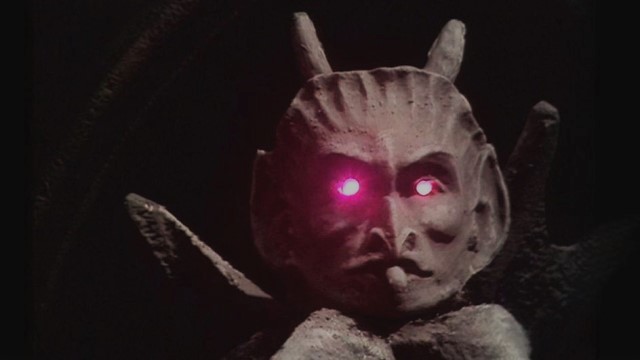
But, on the other hand, there are many Doctor Who episodes where the scares take a back seat and it’s safe to actually sit on the sofa. There’s always danger, death and destruction, but often it’s treated so lightly that it’s more in a great spirit of adventure than true horror.
‘The Sun Makers,’ for example, may feature Leela almost steamed alive by a sadist, and a mob throwing a man to his death from the top of a skyscraper, but it’s not a remotely scary story. And ‘Partners in Crime’ features one woman dying screaming, while another falls hundreds of feet to her death on the pavement below, but most fans would put it in the breezy comedy box, not the Doctor Who horror one.
So, is Doctor Who horror? The answer is clearly yes, but also clearly no, because Doctor Who is a show that’s all genres and no genres. It can go anywhere and do anything. It can be funny, romantic, silly, and deadly serious. It can predict the future and show us the secrets of the past. And it can be scary. Oh, it’s oh-so-good at being scary.
So are you planning to binge on some scary Doctor Who this Halloween season? And which episodes are making it onto your list? Let us know in the comments below.

Seventh Doctor Paisley hanky – order now from the Lovarzi shop!








Leave a Reply